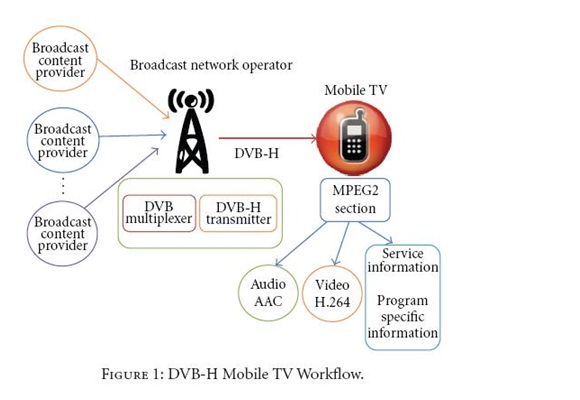Mobile TV
Published on Aug 15, 2016
Abstract
Mobile TV is the wireless transmission and reception of television content - video and voice - to platforms that are either moving or capable of moving. Mobile TV allows viewers to enjoy personalized, interactive television with content specifically adapted to the mobile medium.
The features of mobility and personalized consumption distinguish mobile TV from traditional television services. The experience of viewing TV over mobile platforms differs in a variety of ways from traditional television viewing, most notably in the size of the viewing screen.
The technologies used to provide mobile TV services are digitally based,the terms unicast and multicast are used in the same way they are used for IPTV. That is, unicasting is transmission to a single subscriber, while multicasting sends content to multiple users. These definitions also correspond to those given for similar Internet-based applications. For network operators, the challenge has become: 'How can large-scale delivery of high-quality multimedia to wireless devices be implemented profitably?' Although delivery of this type of content is technically feasible over today's existing unicast networks such as 3G, these networks cannot support the volume and type of traffic required for a fully realized multimedia delivery service (many channels delivered on a mass market scale). Offloading multicast (one-to-many) multimedia traffic to a dedicated broadcast network is more efficient and less costly than deploying similar services over 3G networks
Introduction of Mobile TV
There are currently two main ways of delivering mobile TV. The first is via a two-way cellular network, and the second is through a one-way, dedicated broadcast network. Each approach has its own advantages and disadvantages. Delivery over an existing cellular network has the advantage of using an established infrastructure, inherently reducing deployment costs. At the same time, the operator has ready-made market access to current cellular subscribers, who can be induced to add mobile TV to the services they buy.
The main disadvantage of using cellular networks (2G or 3G) is that mobile TV competes with voice and data services for bandwidth, which can decrease the overall quality of the mobile operator's services. The high data rates that mobile TV demands can severely tax an already capacity-limited cellular system. Also, one cannot assume that existing mobile handsets can receive mobile TV applications without major redesign and replacement. Issues such as screen size, received signal strength, battery power, and processing capability may well drive the mobile TV market to design hand-held receivers that provide a higher quality of voice and video than is available on most current cellular handsets.
Many 2G mobile service operators and most 3G mobile service providers are providing VOD or streaming video. These services are mainly unicast, with limited transmission capacity. They are built upon the underlying technologies used in the mobile cellular system itself - GSM, WCDMA, or CDMA2000. An example of a technology designed to work on a 3G network is Multimedia Broadcast Multicast Service (MBMS), a multicast distribution system that can operate in a unicast or multicast mode. Mobile TV services over existing GSM and WCDMA cellular networks operates in the 5 MHz WCDMA bandwidth, and it supports six parallel, real-time broadcast streaming services of 128 kbit/s each, per 5 MHz radio channel
MEDIA FLOW :

The MediaFLO system is an end-to-end mobile broadcasting technology that can deliver high-quality video to any mobile device. [5]The "FLO" part of the name is an acronym for Forward Link Only. Forward Link is another term for the downlink connection on a mobile phone, meaning that the system only sends data to the mobile devices and does not receive any data back from it.[9] Currently, the only commercially released devices that can receive the MediaFLO signal are mobile phones, but the technology is capable of sending the signal to any device equipped with a MediaFLO receiver.
Qualcomm®, an innovator in wireless technologies, has demonstrated the broadcast of a MediaFLO signal on several mobile devices that are NOT tied to any cellular network.[5] In the US, Qualcomm will broadcast its service on what used to be UHF Channel 55, which is roughly the 700MHz frequency band
FLO technology was designed specifically for the efficient and economical distribution of the same multimedia content to millions of wireless subscribers simultaneously. It actually reduces the cost of delivering such content and enhances the user experience, allowing consumers to "surf" channels of content on the same mobile handsets they use for traditional cellular voice and data services, also works in concert with existing cellular data networks, FLO effectively addresses the issues in delivering multimedia content to a mass consumer audience.
Unencumbered by legacy terrestrial or satellite delivery formats, this technology offers better performance for mobility and spectral efficiency than other mobile broadcast technologies, offering twice the channel capacity. The FLO service is designed to provide the user with a viewing experience similar to a television viewing experience by providing a familiar type of program -guide user interface. ).